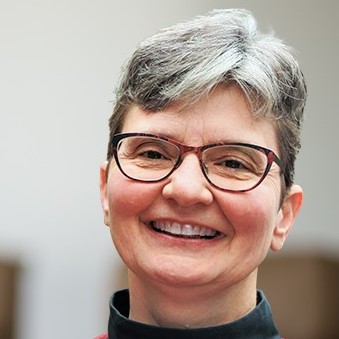Value Capture CEO Ken Segel was a recent guest on "The Lens," the podcast produced by Catalysis (a Value Capture partner).
The topic of Ken's discussion was "What the RaDonda Vaught Case Teaches Us About Culture's Influence on Patient Safety."
Visit the episode page to listen or you can find it below:
Ken ties leadership, systems thinking, and the article he and Dr. John Toussaint recently published in the Harvard Business Review, "4 Actions to Reduce Medical Errors in U.S. Hospitals," to the Vaught verdict's impact. This post highlights two critical themes of Ken's discussion on The Lens.
You can read our post that summarizes the HBR article, and access the full article.
Why is Organizational Culture Important to Patient Safety?
Let’s start at the individual human level. Whether you’re in healthcare or not, just think about what it feels like when, despite your determination to do a good job, you are involved in something that goes wrong. Unintentionally, but you make a mistake. Think about what that feels like. Think about what feelings come across you, from shame to worry, etc. Now imagine that that error, that unintentional error, has contributed to the physical and psychological harm of another human being, perhaps irrevocably.
So then imagine that you’re in healthcare, you’re in a very high-risk industry, with medicines that can harm by the thousands, incredible complexity, incredible demands on your time and needing to do a lot in a short period of time, interruptions everywhere, not supported by really effective systems to be able to get it right every time, and that [error] occurs.
If you are not in the right organizational culture, what is going to be dominant is the fear, the pullback, the desire not to share, the desire to be worried about what happens if we share. Because that is human, that is where we start, if we’d been involved.
The culture that we need is a culture where, as a part of everyone recognizing we’re all there to do our best, we all want to be great, and we aspire to be the best in the world at all we do collectively, starting with safety, is that the most important thing is that we learn from errors and that we do not blame individuals for their part in errors. But in this saying that Toyota has, we free people from the error so that they and their colleagues are free to work on the actual problem, and solve that problem.
"So in other words, it isn’t ‘oh, the system is the problem, not you,’ and you’re free to walk away. Far from it. It’s the depth of seriousness required to free the individual point for blame so that we can all learn from this and strengthen our systems so that it doesn’t happen again."
That culture, which really amounts to the set of behaviors and systems that incent the right behaviors, has to be driven by top leadership and supported in a really deep way, every day, and monitored, so that, at that very human level, what it feels like when you make a mistake, that at those hardest moments, the impulse is ‘even how I’m feeling, the most important is that we share, we call it out, we solve together, and then we share those learnings.'
"If that learning culture, which is really hard to build and very easy to destroy, is not there, we don’t get safety. We get the opposite of safety. And that’s why culture is so important to safety."
The Predicate – It All Starts with the Top Leaders
We take our roots, and one of my long-time mentors in this was Paul O’Neill, who was the former Treasury Secretary and CEO of Alcoa and one of the world’s great safety leaders who showed that zero [harm] was possible. About the leadership piece, he would say, you know, you’re not just making safety a top priority, you’re making safety a pre-condition. It’s not something that we trade off against any other good like providing high quality care, providing care that’s affordable, or that we’re busy. We don’t make excuses.
"If we can’t operate safely, we don’t operate. We dig in and we make this commitment to each other that we’re going to go for zero, really, and not trade it off. So it’s that level of leadership, the determination to get in and make this sort of beyond priority, almost like breathing, that’s required because of the complexities in healthcare, that’s how hard it is."
That’s the level of leadership and ownership that we’re talking about, and I’ll share one more Paul O’Neill anecdote about that. He said the leader has to feel responsible for everything that happens in the organization, especially things gone wrong. They’re not the one that does everything, but they create the conditions that everyone operates under. And again, that sensitivity to things that are gone wrong are, in a way, most important because of their cultural impact. So that leader taking responsibility so that the system changes, including how the leadership system works to support the safety improvement system will occur. That’s the level of leadership that’s required to get in there and get this done and that makes the difference.
Root Action in First Principles
Amidst great complexity, amidst a very diverse sector, one can get overwhelmed thinking about how do we make the changes that we need to. One of the things that I think is very helpful for leaders to do at that moment is to go back to first principles. Those can include what’s right, morally, and others. And it can go back to, what is it that we as individuals, families, patients want?
When it comes to safety and harm in healthcare, and the data back this up, when something happens that harms someone or nearly happens, what patients and family members want is that they just want to know that is that it’s not going to happen to somebody else. That is the first and most powerful instinct again and again and again.
What does that tell us, what does that tell me?
That gives me, as a leader, the energy to put it into a true learning and prevention system. To keep it from happening to someone else, we’ve got to have it reported. We’ve got to try to solve it, and we’ve got to share the learnings about the investigation and the solution widely, with everybody else who does that same kind of work, so they don’t have to fall into the same kind of error.
So, amidst overwhelm, for those of us that are in the sector and providing leadership, what do first principles tell us and how can we apply those first-principles thinking to look at our own system and say, how much of this system is in fact regulatorily structured, where we’re going to do the reporting, where we’re going to say we’re doing the analysis, and how much of it is really connected enough, powerful enough, to be able to say to that family, ‘yes, I want what you want, I don’t want that to happen to anybody else.’
Let’s use first principles to help everyone to know what to do and to more deeply connect the effort that we have going on. There’s a lot of effort, there’s a lot of activity. This isn’t necessarily about more effort or activity, it’s about connecting it together more powerfully so that we get better results.

Written by Melissa Moore
Ms. Moore’s responsibilities center on marketing and communications. Prior to joining Value Capture, she served as a Marketing Manager at Reed Smith, a global law firm. Other career steps include: co-founding and operating a trend-setting coffeehouse; securities lawyer; and, service and equipment sales.

Submit a comment